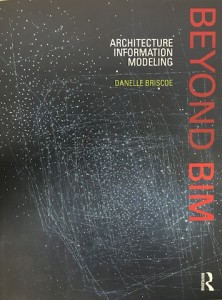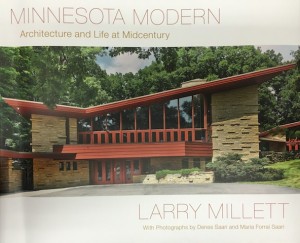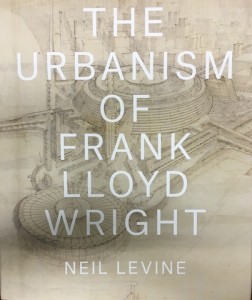APL started the semester off right with nearly 40 new books this week! I imagine we might just have a new book for you whatever your interest. Three are highlighted below, though it was difficult to choose!
 Briscoe, Danelle. Beyond BIM: Architecture Information Modeling. London: Routledge, Taylor & Francis Group, 2016.
Briscoe, Danelle. Beyond BIM: Architecture Information Modeling. London: Routledge, Taylor & Francis Group, 2016.
First, I would like to congratulate Professor Briscoe on her new book, Beyond BIM. APL was most excited to see its arrival!
Millet, Larry. Minnesota Modern: Architecture and Life at Midcentury. With photographs by Denes Saari and Maria Forrai Saari. Minneapolis: University of Minnesota Press, 2015.
After an introductory essay, Minnesota Modern is arranged  thematically by building type: commercial buildings, roadside architecture, public buildings, religious works, and domestic architecture. Set between each chapter are examples of mid-century houses from Minnesota. Each collection is arranged chronologically and includes photos, documents, and a description of the various houses. Millet concludes his survey by arguing for the preservation of Minnesota’s Mid-Century heritage. He writes, “At present, however, only a handful of midcentury buildings in Minnesota- among them Christ Lutheran Church and three works by Frank Lloyd Wright- are listed on the National Register” (pg. 339). Of the works included in the survey, I am quite struck by the design of Northwestern National Life Insurance Building, Minneapolis (1964)- I am rather drawn to the attenuated arches. I also greatly enjoyed looking at the motels, bowling alleys, and gas stations – which includes one designed by Frank Lloyd Wright.
thematically by building type: commercial buildings, roadside architecture, public buildings, religious works, and domestic architecture. Set between each chapter are examples of mid-century houses from Minnesota. Each collection is arranged chronologically and includes photos, documents, and a description of the various houses. Millet concludes his survey by arguing for the preservation of Minnesota’s Mid-Century heritage. He writes, “At present, however, only a handful of midcentury buildings in Minnesota- among them Christ Lutheran Church and three works by Frank Lloyd Wright- are listed on the National Register” (pg. 339). Of the works included in the survey, I am quite struck by the design of Northwestern National Life Insurance Building, Minneapolis (1964)- I am rather drawn to the attenuated arches. I also greatly enjoyed looking at the motels, bowling alleys, and gas stations – which includes one designed by Frank Lloyd Wright.
Levine, Neil. The Urbanism of Frank Lloyd Wright. Princeton: Princeton University Press, 2016.
 We received this new work on Frank Lloyd Wright by Neil Levine- and I thought it might be of interest to many of our patrons. Levine writes in his conclusion:
We received this new work on Frank Lloyd Wright by Neil Levine- and I thought it might be of interest to many of our patrons. Levine writes in his conclusion:
At the very least, one can say initially, in this brief conclusion, that Broadacre City proved to be but a deviation revealing its unique place in Wright’s urbanism as a polemical critique, purely theoretical construct, and sui generis proposition. Through its multiple case studies of designs for real conditions and sites, this book has shown how Wright’s urbanism was a broad-ranging, continually evolving effort to enrich city life that cannot and should not be reduced to an exceptional vision for a utopian agrarian world of rural-like existence. (pg. 385)
I will add that Levine heavily illustrates his work primarily with drawings from The Frank Lloyd Wright Foundation Archives. Included among the illustrations are two night perspectives- one of Point Park Civic Center and the other of the Madison Civic Center. As I am not as familiar with the work of Wright, I was quite surprised by these beautiful illustrations.
